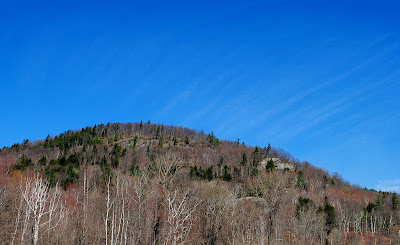Over the past few weeks, we have learned much from engaging in this project and the innumerable resources it led us to find. After setting out with goals to identify problems surrounding our site, the ecological effects of major highways, and implications from previous studies, we sought offer some of the most viable of our own ideas that we hope one day could actually apply to the state of Vermont and this link of the Green Mountains.
In a succinct and brief conclusion, we hope to wrap up our efforts on this blog, leave the information we gathered and presented to anyone who may come across it, and inspire the efforts of other engaged and determined individuals or groups.
Between the three of us, we have agreed upon three perspectives of the issues to simplify and present our materials in the most digestible and honest way possible. So what did we learn in this process?
1. We said it once and we will repeat it as often as necessary: No landscape is permanent. This simple concept is crucial to nearly every aspect of our project and any other viable project that may find itself on Interstate 89 between Bolton and Waterbury in the future. To accept that the interstate has the sole right of presence on the land is to imagine the problem without insight. As we covered in some of our earliest posts, the stretch of highway that creates such a daunting task today for wildlife conservationists has only been in existence for about 50 years total. Just because it has been a lifetime fixture on the landscape for so many of us thus far does not mean it cannot be changed, adjusted, or rethought to match the needs of a new future. With this thought and hope, we hope to push forward efforts to change, adjust, and rethink our relationship to the natural communities of this stretch of land and the six million acres that surrounds it as well.
2. There have been several studies in the recent past and there are likely to be many more in the near future regarding wildlife conservation and connectivity, especially throughout the state of Vermont. We cannot forget to include this site, no matter how daunting it may be in the context of a small state like Vermont, in the consideration for conservation. We cannot express this strongly enough: this area is important to recreationists, conservationists, the general public, and above all, several key populations of wildlife in the state. Our research shows the presence of populations such as coyotes, bobcats, bears, deer, moose, and numerous amphibians that could possibly utilize a north-south connection of the Green Mountains. Although there is still more extensive research to be done regarding how to connect populations inexpensively, it is clear that the task is necessary and immensely important in regard to bio/genetic diversity, healthy ecosystems, reducing traffic accidents, improving road management/location, and the value of these species to Vermont's wild and settled land.
3. Looking toward the future, we found the most uplifting and promising aspects of the entire project to be some of the most simple. Education, sense of place, and cooperation. These are essentially the three pillars of the viability of any project regarding conservation in Vermont. The costs are surprisingly low (no bridges to construct or materials to buy) and the rewards are immense (a vast human community that understands and supports the efforts to connect our existence back to the land which, in the end, is what supports us all). And if these two aspects fail at reducing the intimidation of the task at hand, one can always rest back on the fact that cooperation is happening right now as we speak. There are those out there in the present day who, even without our dream of a widespread education, are working to link arms and form an effort greater than just one individual, one business, or one community. The possibilities, then, are endless.
It seems silly, at this point then, to wrap up our efforts with this. It seems pointless to claim that this is the end because it's not. While these posts may no longer be authored in the future, the blog remains as a resource, a connection to other professional and popular resources, and the world can add three more young minds to the challenge our world faces concerning conservation in the face of the explosion of human population.
For all three of us, Berrett, Mike, and Jack, this is not the end but simply the first venture into an expansive world of possibilities and chances to create new perspectives, change old ones, and make a true lasting change.
From all of us here at Conservation and Connectivity in the Heart of Vermont: Thank you. We hope you have delighted in our efforts as much as we have, and urge you to face this challenge with us. Together, we can realize this simple dream.
It seems silly, at this point then, to wrap up our efforts with this. It seems pointless to claim that this is the end because it's not. While these posts may no longer be authored in the future, the blog remains as a resource, a connection to other professional and popular resources, and the world can add three more young minds to the challenge our world faces concerning conservation in the face of the explosion of human population.
For all three of us, Berrett, Mike, and Jack, this is not the end but simply the first venture into an expansive world of possibilities and chances to create new perspectives, change old ones, and make a true lasting change.
From all of us here at Conservation and Connectivity in the Heart of Vermont: Thank you. We hope you have delighted in our efforts as much as we have, and urge you to face this challenge with us. Together, we can realize this simple dream.























